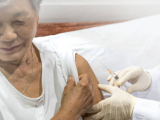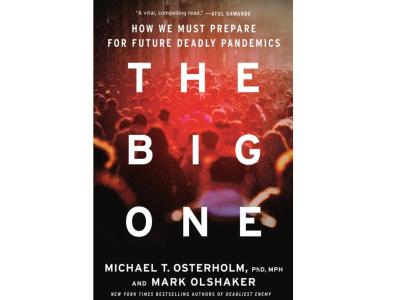Apr 2, 2012
Cambodian girl dies from H5N1 infection
Cambodian health officials have reported that a 6-year-old girl has died from H5N1 avian flu, the Phnom Penh Post reported today. The girl, from Kampong Chhnang province, got sick after eating meat from a dead chicken, and a provincial health official said the girl's family initially tried to treat her symptoms with medicine and injections. When her condition did not improve, she was hospitalized on Mar 28, where she died on Mar 30, according to the report. A World Health Organization (WHO) official said the girl's death is Cambodia's second this year from H5N1. Once her case is added to the WHO's cumulative H5N1 total, it will bring the country's total since 2005 to 20 cases, including 18 deaths. Kampong Chhang is in south-central Cambodia.
Mar 26 WHO global H5N1 case count
WHO Bulletin on flu notes research progress, persistent puzzles
Researchers have published thousands of studies on influenza in the past 2 years, but major puzzles and knowledge gaps persist, according to articles published in the April Bulletin of the World Health Organization, which is dedicated to flu. The issue presents a wide range of news, commentary, and research articles on developments in the field. In an editorial, flu consultant Michael Perdue, PhD, and Tim Nguyen of the WHO note that in November 2009 a WHO-hosted consultation identified five major flu-research "streams," and last year the agency commissioned more than 20 literature reviews covering the WHO's top research recommendations. A group of experts that met in November 2011 found more than 4,000 relevant publications from 2010 and 2011. The panel reported important progress in each of 16 research "substreams" listed by the WHO. One area where science has progressed is that of the survival of
flu viruses in the environment and the role of close contact and aerosols in transmission, Perdue and Nguyen write. They say the WHO will soon publish several of the commissioned reviews along with a progress report. The theme issue also includes a news report noting that "our understanding of the fundamental epidemiology of influenza remains far from complete," despite many advances. The unsolved mysteries and problems, it says, include the highly variable pattern of seasonal flu outbreaks in the tropics, the geographic origins of seasonal flu strains, the shortage of surveillance data on flu in animal populations, and the need for more broadly protective vaccines. Among other items, the special issue also includes four research articles and four reports on "lessons from the field."
WHO Bulletin table of contents
Bulletin editorial
Two
cell-based vaccines shown safe, immunogenic in trials
Two new studies in Vaccine demonstrate the safety and immunogenicity of cell-based influenza vaccines. In the first study, researchers from Austria and Germany, including from Baxter International, tested Baxter's nonadjuvanted Vero-cell–derived, pandemic 2009 H1N1 (pH1N1) vaccine. The phase I/II study involved 408 adults who were stratified by age (18-59 and 60 and older) and randomly assigned to receive two doses of either 3.75 micrograms (mcg) or 7.5 mcg of antigen 21 days apart. The researchers found that one 7.5-mcg dose induced seroprotection rates of 86.9% in younger adults and 75.2% in elderly volunteers, and that two of those doses raised the levels to 90.9% and 89.1%, respectively. At the lower dose the rates were 84.5% and 70.0% for the younger and older groups, respectively, after one dose and 93.2% and 75.5%, respectively, after two doses. The authors noted, however, that from 34% to 49% of volunteers had
seroprotective levels of pH1N1 antibodies before receiving the vaccine.
Apr 1 Vaccine abstract
In the second study, Japanese and Novartis scientists administered Novartis's cell-based pH1N1 vaccine using the same antigen levels (3.75 and 7.5 mcg) combined with the company's proprietary MF59 adjuvant to 123 children aged 6 months to 18 years and 200 adults aged 19 to 60. In addition, 100 elderly volunteers received only the low-antigen formulation. Each group received two doses 21 days apart. In children, seroconversion rates were 56% and 78% in the low- and high-dose groups after one shot and 100% in both groups after two doses. In younger adults the rates were 79% and 89% in the two dosage groups, respectively, after one dose and 96% and 95%, respectively, after two doses. Seroconversion rates in the elderly were 46% after one dose and 91% after two. For both studies, the teams based seroprotection and
seroconversion rates on EU standards. Both vaccines had good safety profiles.
Mar 31 Vaccine abstract
Spanish data show low flu vaccine effectiveness
Spanish researchers found trivalent flu vaccine effectiveness (VE) to be 39% against all strains of lab-confirmed flu and 46% against lab-confirmed pH1N1 flu, according to a study in Vaccine. Investigators analyzed data from 755 lab-confirmed flu cases (574 pH1N1 and 181 influenza B) and 591 controls (those with flu-like illness who tested negative for flu) during the last three flu seasons. They found VE for all strains of flu to be 39% (95% confidence interval [CI], -19 to 68) for all patients and 36% (95% CI, -39 to 71) for those in targeted groups. Against pH1N1, the vaccine's effectiveness was 46% (95% CI, 0 to 72) for all patients and 47% (95% CI, 0 to 74) for targeted groups. VE against influenza B was 23% (95% CI, -180 to 96) over all groups.
Mar 30 Vaccine study


















